
Schaerbeek: The Eclectic Heart of Brussels
Discover Schaerbeek in Brussels: A vibrant neighborhood blending Art Nouveau architecture, rich history, and diverse culture, perfect for an enriching travel experience.
Schaerbeek, a vibrant and diverse neighborhood in Brussels, is an eclectic blend of history, culture, and modernity. Known for its Art Nouveau architecture, the area boasts some of the most stunning buildings in the city, including the Maison Autrique and the Schaerbeek Town Hall. As you stroll through its streets, you'll encounter charming parks, bustling markets, and a variety of cafes and restaurants offering both traditional Belgian fare and international cuisine. Schaerbeek is also home to the Train World Museum, a must-visit for railway enthusiasts and families alike. This interactive museum showcases the rich history of Belgian railways, with impressive locomotives and engaging exhibits. Nearby, the Josaphat Park provides a green oasis perfect for a leisurely walk or a picnic. The neighborhood is well-connected to the rest of Brussels, making it a convenient base for exploring the city. Whether you're interested in architecture, history, or simply soaking up the local atmosphere, Schaerbeek offers a unique and enriching experience for every traveler.
Local tips in Schaerbeek
- Visit the Train World Museum early in the morning to avoid crowds.
- Take a leisurely stroll through Josaphat Park to relax and enjoy nature.
- Don't miss the local markets for fresh produce and unique souvenirs.
- Explore the Art Nouveau buildings scattered throughout the neighborhood for a glimpse into Brussels' architectural heritage.
- Use public transport to easily navigate between Schaerbeek and other parts of Brussels.
Schaerbeek: The Eclectic Heart of Brussels
Schaerbeek, a vibrant and diverse neighborhood in Brussels, is an eclectic blend of history, culture, and modernity. Known for its Art Nouveau architecture, the area boasts some of the most stunning buildings in the city, including the Maison Autrique and the Schaerbeek Town Hall. As you stroll through its streets, you'll encounter charming parks, bustling markets, and a variety of cafes and restaurants offering both traditional Belgian fare and international cuisine. Schaerbeek is also home to the Train World Museum, a must-visit for railway enthusiasts and families alike. This interactive museum showcases the rich history of Belgian railways, with impressive locomotives and engaging exhibits. Nearby, the Josaphat Park provides a green oasis perfect for a leisurely walk or a picnic. The neighborhood is well-connected to the rest of Brussels, making it a convenient base for exploring the city. Whether you're interested in architecture, history, or simply soaking up the local atmosphere, Schaerbeek offers a unique and enriching experience for every traveler.
Iconic landmarks you can’t miss
Josaphat Park
Explore Josaphat Park, a serene urban oasis in Schaerbeek, Brussels, where nature and culture beautifully converge for an unforgettable experience.

Train World
Explore the fascinating history of trains at Train World, Belgium's premier rail museum, featuring interactive exhibits and stunning locomotive displays.

Saint Mary's Royal Church
Explore the breathtaking beauty and architectural splendor of Saint Mary's Royal Church, a cultural and spiritual landmark in Schaerbeek, Belgium.
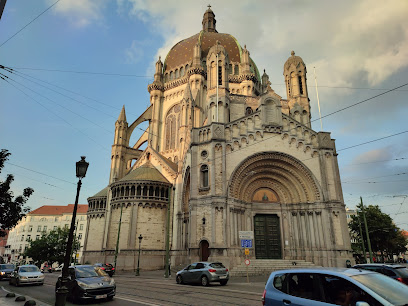
Maison Autrique
Explore Maison Autrique, a stunning Art Nouveau museum in Schaerbeek showcasing Victor Horta’s architectural genius and rich cultural history.

Musée schaerbeekois de la bière
Explore the fascinating world of Belgian beer at the Musée schaerbeekois de la bière, where history and brewing culture come alive.

Église Sainte Suzanne
Discover the enchanting Église Sainte Suzanne, a serene Catholic church in Schaerbeek, showcasing stunning architecture and a rich spiritual heritage.

Parc Reine-Verte
Explore the serene beauty of Parc Reine-Verte, a tranquil city park in Schaerbeek, perfect for relaxation and nature walks in Brussels.
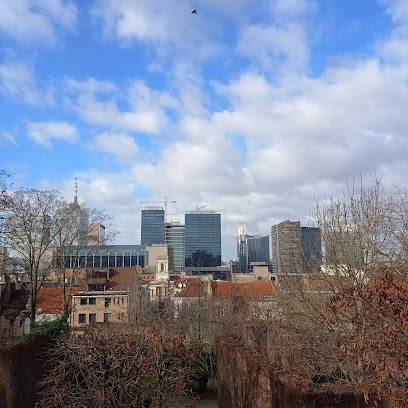
Lumière des Nations | Light for the Nations
Explore the serene beauty of Lumière des Nations, a Christian church in Brussels that blends faith, art, and community in a stunning architectural setting.

De Japanse Kerselaars
Explore the breathtaking beauty of the Japanese Cherry Blossom Trees in Schaerbeek, Belgium, a seasonal spectacle that enchants visitors with its vibrant petals.

Monument aux victimes civiles de la guerre
Discover the Monument aux victimes civiles de la guerre in Schaerbeek, a poignant sculpture honoring the resilience of civilians affected by war. A must-visit for history and art lovers.

Unmissable attractions to see
Atomium
Discover the Atomium, Brussels' iconic landmark, blending history, culture, and breathtaking views in a unique architectural marvel.

Mini-Europe
Explore Europe's cultural heritage in miniature at Mini-Europe, a captivating outdoor museum in Brussels showcasing iconic landmarks.

Josaphat Park
Experience the beauty and tranquility of Josaphat Park, a lush urban oasis in Schaerbeek, perfect for families and nature lovers alike.

Train World
Discover the enchanting world of trains at Train World, Belgium’s premier rail museum, offering interactive exhibits and historic locomotives for all ages.

Maison Autrique
Experience the elegance of Art Nouveau at Maison Autrique, a captivating museum in Schaerbeek showcasing extraordinary architecture and art.

Musée schaerbeekois de la bière
Explore the fascinating history of Belgian beer at the Schaerbeek Museum of Beer, a unique cultural gem in Belgium's brewing heritage.

musée d'Art spontané
Discover the raw creativity of outsider art at the Musée d'Art Spontané in Schaerbeek, Brussels – a unique gem for art lovers and curious travelers.

Essential places to dine
Le Zinneke
Experience the rich flavors of Belgium at Le Zinneke in Schaerbeek, where barbecue meets seafood in a cozy atmosphere.
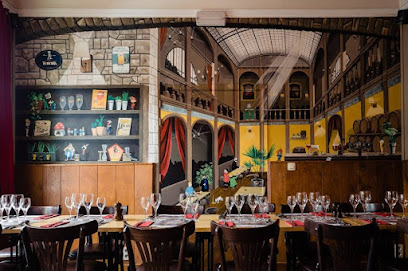
Le Saint Hubert
Experience authentic Belgian brasserie dining at Le Saint Hubert in Schaerbeek, where tradition meets flavor in every dish.

Le Saint Georges
Discover the culinary delights at Le Saint Georges in Schaerbeek - where traditional brasserie charm meets fresh seafood excellence.
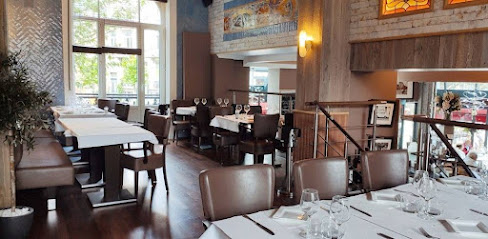
Buca di Bacco
Experience authentic Italian cuisine at Buca di Bacco in Schaerbeek, where tradition meets modern dining in a cozy atmosphere.

Le Max
Savor authentic Italian flavors at Le Max in Schaerbeek - where every dish tells a story.

Faubourg St Antoine restaurant
Experience authentic Belgian cuisine at Faubourg St Antoine, where traditional flavors meet cozy dining in Schaerbeek.

Ane Vert
Discover Ane Vert: A cozy Schaerbeek restaurant offering seasonal Belgian cuisine and an inviting atmosphere perfect for food enthusiasts.

Chabrol Restaurant
Experience modern European cuisine at Chabrol Restaurant in Schaerbeek – where every dish is a work of art waiting to be savored.

L'âne Fou
Experience the essence of Belgian cuisine at L'âne Fou - a lively gastropub blending brewery charm with culinary excellence in Schaerbeek.
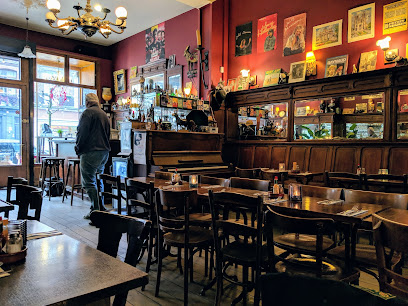
Le Petit Restaurant
Experience authentic Belgian cuisine at Le Petit Restaurant in Schaerbeek—where quality meets affordability in a cozy atmosphere.
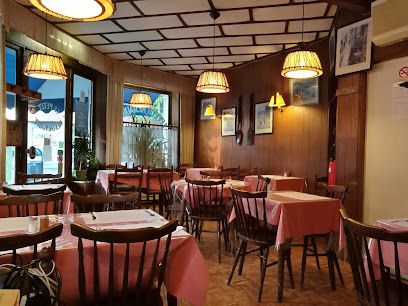
Markets, malls and hidden boutiques
Action Schaarbeek
Explore Action Schaarbeek, a vibrant gift shop in Belgium offering everything from home goods to party supplies, perfect for tourists and locals alike.

Spullenhulp
Explore Spullenhulp in Schaerbeek for sustainable fashion and unique vintage finds in a charming used clothing boutique.

Nisa - Boutique de vêtements islamiques
Discover Nisa, the premier destination for Islamic fashion in Schaerbeek, offering stylish and modest clothing for all occasions.

Fassiphone Belgium
Explore Fassiphone Belgium for unique handcrafted gifts, exquisite home goods, and enchanting perfumes that embody the charm of Brussels.

The Luxury Box
Discover a treasure trove of unique gifts and souvenirs at The Luxury Box Gift Shop in Schaerbeek, Belgium.

Satex Cadeau Center
Explore Satex Cadeau Center, your ultimate destination for unique souvenirs and gifts in Schaerbeek, Belgium.
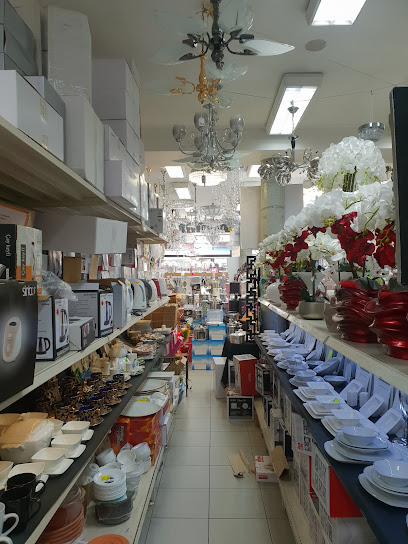
Expert BXL
Discover the essence of Belgium at Expert BXL in Schaerbeek, where unique local products await your exploration.

Share-a-box
Explore Share-a-box: Your destination for unique gifts and local treasures in the heart of the city.

Africlo
Explore Africlo in Schaerbeek for a unique boutique shopping experience featuring local fashion and accessories that reflect Belgian creativity.

Winkel kleding
Explore the vibrant fashion scene at Winkel Kleding in Schaerbeek, where unique styles and local flair come together for an unforgettable shopping experience.
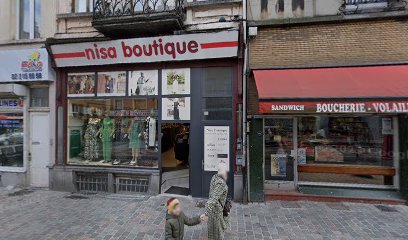
Essential bars & hidden hideouts
1030 Café
Discover the lively 1030 Café in Schaerbeek, a hotspot for craft beers, cocktails, live music, and unforgettable nights in Brussels.

Le Barboteur Bierotheque
Experience the finest craft beers in Schaerbeek at Le Barboteur Bierotheque, a cozy bar perfect for relaxation and socializing.

Copain
Discover Copain in Schaerbeek, a trendy bar offering an exceptional selection of Belgian beers and wines in a cozy atmosphere.

Python - Beer Cellar
Experience the best of Belgian beer culture at Python - Beer Cellar, a charming bar in Schaerbeek offering a vast selection of craft beers in a welcoming atmosphere.
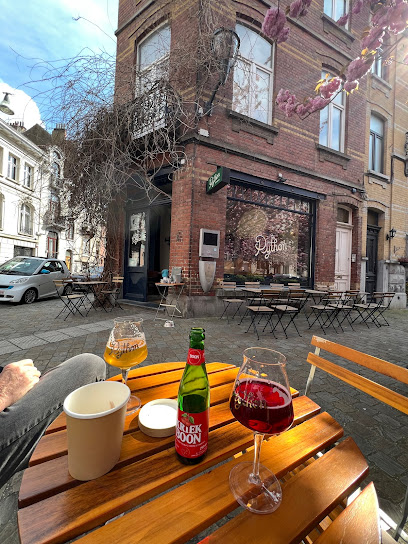
Chez Felix
Discover the essence of Belgian wine culture at Chez Felix, a charming wine bar in Schaerbeek, offering exquisite selections and delightful tapas.

New Plasky
Discover New Plasky: A must-visit bar and restaurant in Schaerbeek, offering a delightful menu and a warm atmosphere perfect for relaxation.

L'impair
Discover the charm of Belgian hospitality at L'impair, a cozy bar in Schaerbeek serving delightful drinks in a welcoming atmosphere.

Marciana
Experience the charm of Marciana, a vibrant bar in Schaerbeek, renowned for its welcoming atmosphere and extensive drink selection.

Buda Bar
Experience the vibrant nightlife of Brussels at Buda Bar, a local favorite in Schaerbeek known for its eclectic drinks and inviting atmosphere.

Bar Comedy
Experience laughter and great drinks at Bar Comedy in Schaerbeek, a vibrant bar blending humor and hospitality for an unforgettable night out.

Local Phrases
-
- HelloSalut
[sah-loo] - GoodbyeAu revoir
[oh re-vwah] - YesOui
[wee] - NoNon
[nohn] - Please/You're welcomeS'il vous plaît/De rien
[seel voo pleh/duh ryen] - Thank youMerci
[mehr-see] - Excuse me/SorryExcusez-moi/Désolé
[ex-kew-zay mwa/day-zo-lay] - How are you?Comment ça va?
[koh-mohn sah vah] - Fine. And you?Bien. Et toi?
[byen. ay twah] - Do you speak English?Parlez-vous anglais?
[par-lay voo ahn-glay] - I don't understandJe ne comprends pas
[zhuh nuh kohm-prahnd pah]
- HelloSalut
-
- I'd like to see the menu, pleaseJe voudrais voir la carte, s'il vous plaît
[zhuh voo-dray vwahr lah kart, seel voo pleh] - I don't eat meatJe ne mange pas de viande
[zhuh nuh mahnj pah duh vyand] - Cheers!Santé!
[sahn-tay] - I would like to pay, pleaseJe voudrais payer, s'il vous plaît
[zhuh voo-dray pay-ay, seel voo pleh]
- I'd like to see the menu, pleaseJe voudrais voir la carte, s'il vous plaît
-
- Help!Au secours!
[oh se-coor] - Go away!Allez-vous en!
[ah-lay voo zan] - Call the Police!Appelez la Police!
[ah-play lah poh-lees] - Call a doctor!Appelez un médecin!
[ah-play uh mayd-sahn] - I'm lostJe suis perdu
[zhuh swee pair-doo] - I'm illJe suis malade
[zhuh swee mah-lahd]
- Help!Au secours!
-
- I'd like to buy...Je voudrais acheter...
[zhuh voo-dray zah-shay...] - I'm just lookingJe regarde juste
[zhuh ruh-gahrd juhst] - How much is it?Combien ça coûte?
[kohm-byen sah koot] - That's too expensiveC'est trop cher
[say troh sher] - Can you lower the price?Pouvez-vous baisser le prix?
[poo-veh voo bay-say luh pree]
- I'd like to buy...Je voudrais acheter...
-
- What time is it?Quelle heure est-il?
[kel uhr ay eel] - It's one o'clockIl est une heure
[eel ay oon uhr] - Half past (10)Dix heures et demie
[dees uhr ay duh-mee] - MorningMatin
[mah-tan] - AfternoonAprès-midi
[ah-pray mee-dee] - EveningSoir
[swahr] - YesterdayHier
[yehr] - TodayAujourd'hui
[oh-zhoor-dwee] - TomorrowDemain
[duh-mahn] - 1Un
[uhn] - 2Deux
[duh] - 3Trois
[trwah] - 4Quatre
[kah-truh] - 5Cinq
[sank] - 6Six
[sees] - 7Sept
[sept] - 8Huit
[weet] - 9Neuf
[nuff] - 10Dix
[dees]
- What time is it?Quelle heure est-il?
-
- Where's a/the...?Où est...?
[oo ay...] - What's the address?Quelle est l'adresse?
[kel ay lad-res] - Can you show me (on the map)?Pouvez-vous me montrer (sur la carte)?
[poo-veh voo muh mohn-tray (soor lah kart)] - When's the next (bus)?Quand est le prochain (bus)?
[kahn ay luh proh-shahn (boos)] - A ticket (to ....)Un billet (pour ...)
[uhn bee-yay (poor ...)]
- Where's a/the...?Où est...?
History of Schaerbeek
-
Schaerbeek's history can be traced back to the early medieval period when it was primarily an agricultural area. The name 'Schaerbeek' is derived from the old Dutch word for 'briar brook', indicating the natural landscape that characterized the region. As Brussels began to expand in the 19th century, Schaerbeek transformed from a rural village into a burgeoning suburb.
-
The 19th century marked a significant transformation for Schaerbeek, coinciding with the industrial revolution in Belgium. The establishment of factories and the expansion of the railway network facilitated economic growth and attracted a diverse population. This period saw the construction of notable architectural landmarks, reflecting the eclectic styles that emerged, including Art Nouveau and neoclassical designs.
-
Schaerbeek is renowned for its stunning examples of Art Nouveau architecture, particularly during the late 19th and early 20th centuries. Architects like Victor Horta and Paul Hankar left their mark by designing ornate buildings that emphasized organic forms and intricate details. The community embraced this artistic movement, making Schaerbeek a vibrant cultural hub within Brussels.
-
During World War II, Schaerbeek, like much of Brussels, faced occupation and significant hardships. The post-war period, however, brought reconstruction and revitalization. The local population grew, and new cultural institutions and parks were developed, contributing to the neighborhood's character and community spirit.
-
In recent decades, Schaerbeek has evolved into a multicultural neighborhood, reflecting Brussels' status as a crossroads of Europe. Its diversity is evident in local markets, festivals, and culinary offerings. Efforts have been made to preserve its historical architecture while also promoting urban development, making it a dynamic area that honors its rich heritage while looking toward the future.
Schaerbeek Essentials
-
Schaerbeek is easily accessible from other neighborhoods in Brussels. The Brussels-North train station (Bruxelles-Nord) is the main hub for regional and international trains, with direct connections to Schaerbeek station. You can also take tram line 25 or bus lines 29 and 65 from the city center. For those arriving from Brussels Airport, the airport train service connects directly to Schaerbeek station, making it a convenient choice.
-
Schaerbeek offers several public transport options. The STIB/MIVB tram and bus services are efficient, with tram lines 7 and 25 serving the area. You can also use trains from Schaerbeek station to reach other parts of Brussels or nearby cities. Bicycles are popular, and there are bike-sharing services available, such as Villo!, allowing you to explore the neighborhood at your leisure.
-
Schaerbeek is generally a safe neighborhood for tourists. However, like any urban area, it's advisable to remain vigilant. Areas around the Brussels-North train station can experience higher crime rates, particularly related to petty theft. Avoid walking alone late at night in poorly lit streets and be mindful of your belongings in crowded spaces.
-
In case of an emergency, dial 112 for police, fire, or medical assistance. The local police station is located on Avenue Louis Bertrand. For medical emergencies, the nearest hospital is the CHU Brugmann. Ensure you have travel insurance that covers health emergencies. Pharmacies are available throughout the neighborhood for minor health issues.
-
Fashion: Do dress appropriately, especially when visiting religious sites. Avoid overly casual or revealing clothing. Religion: Do respect local customs and traditions. Always observe silence when entering places of worship. Public Transport: Do give up your seat for elderly passengers. Don’t eat or drink on public transport. Greetings: Do greet people with a smile and a handshake. Eating & Drinking: Do try local specialties at cafés and restaurants. Don’t waste food or refuse hospitality, as it can be seen as rude.
-
To experience Schaerbeek like a local, visit the local markets such as the Place de la Reine on weekends for fresh produce and artisanal goods. Engage with locals by trying out small cafés where you can enjoy traditional Belgian waffles and chocolate. Don't miss the impressive Art Nouveau architecture in the area, particularly the Maison Autrique. Participating in local festivals or events can also provide deeper insights into the community's culture.
Nearby Cities to Schaerbeek
-
Things To Do in Mechelen
-
Things To Do in Leuven
-
Things To Do in Aalst
-
Things To Do in Louvain-la-Neuve
-
Things To Do in Antwerp
-
Things To Do in Ghent
-
Things To Do in Mons
-
Things To Do in Namur
-
Things To Do in Hasselt
-
Things To Do in Tournai
-
Things To Do in Dinant
-
Things To Do in Kortrijk
-
Things To Do in Genk
-
Things To Do in Liege
-
Things To Do in Bruges










